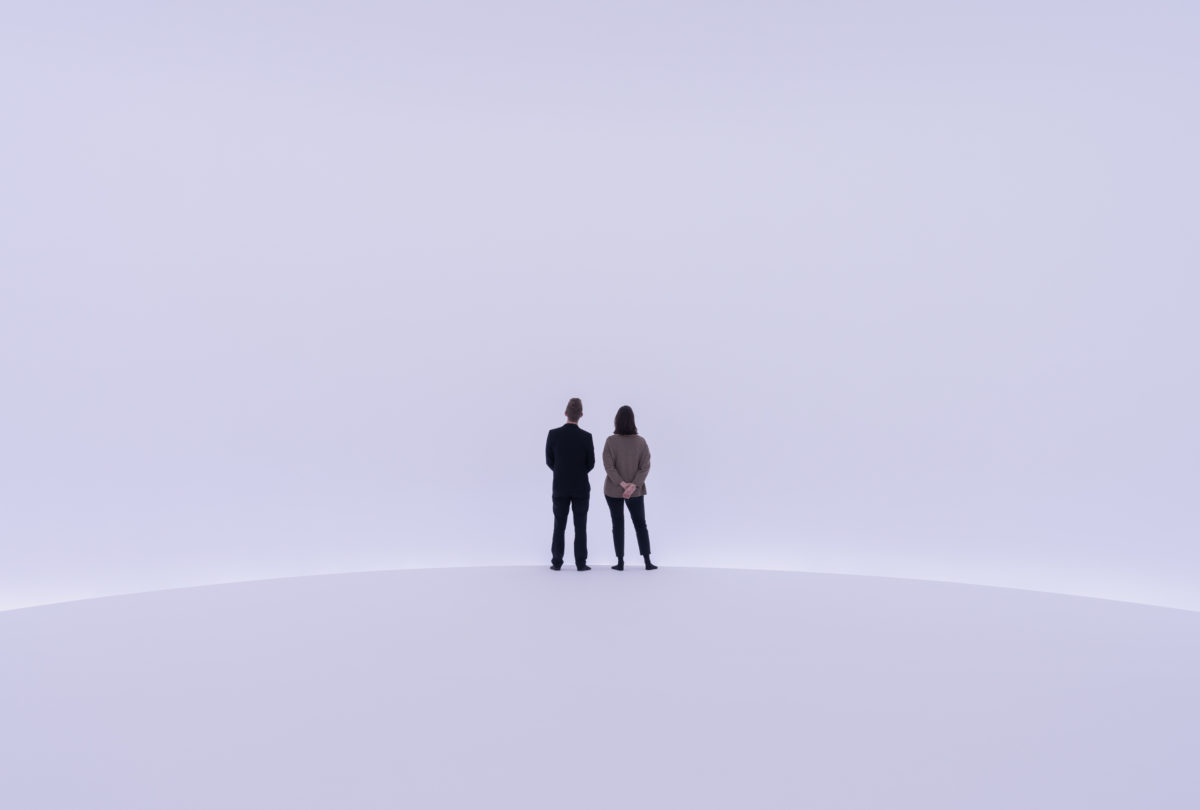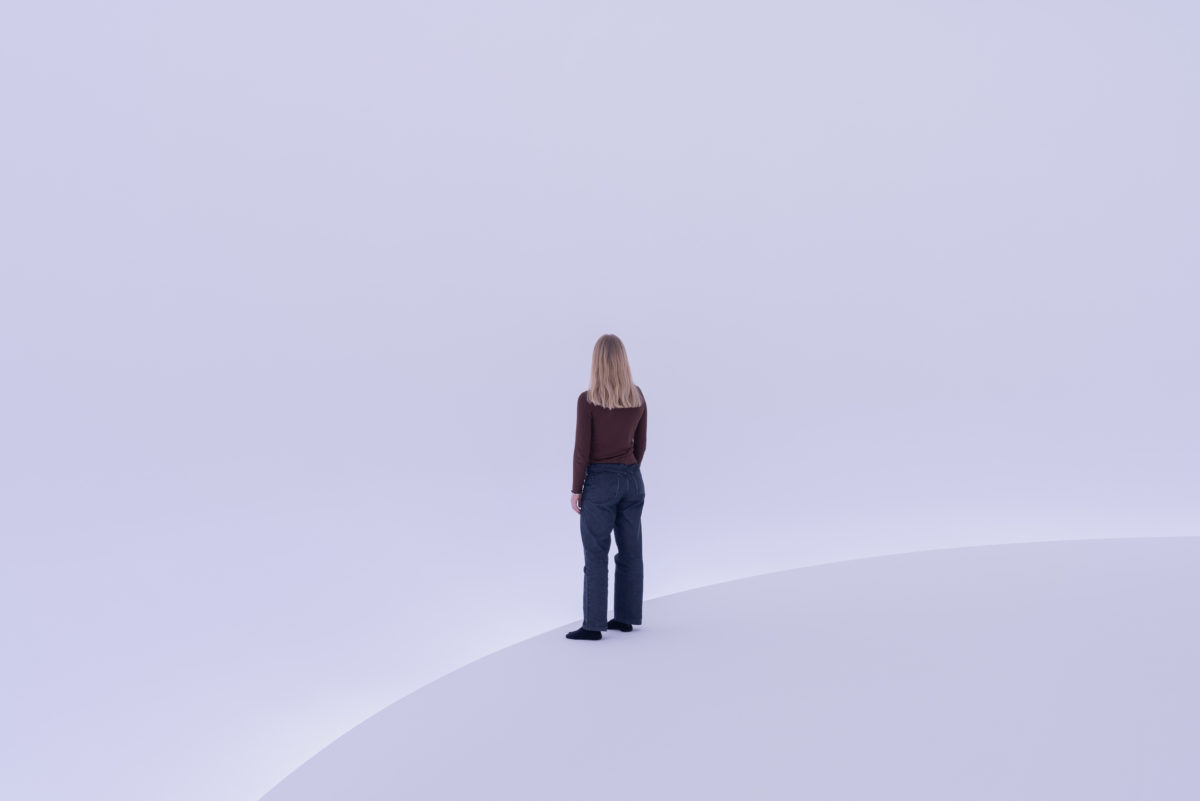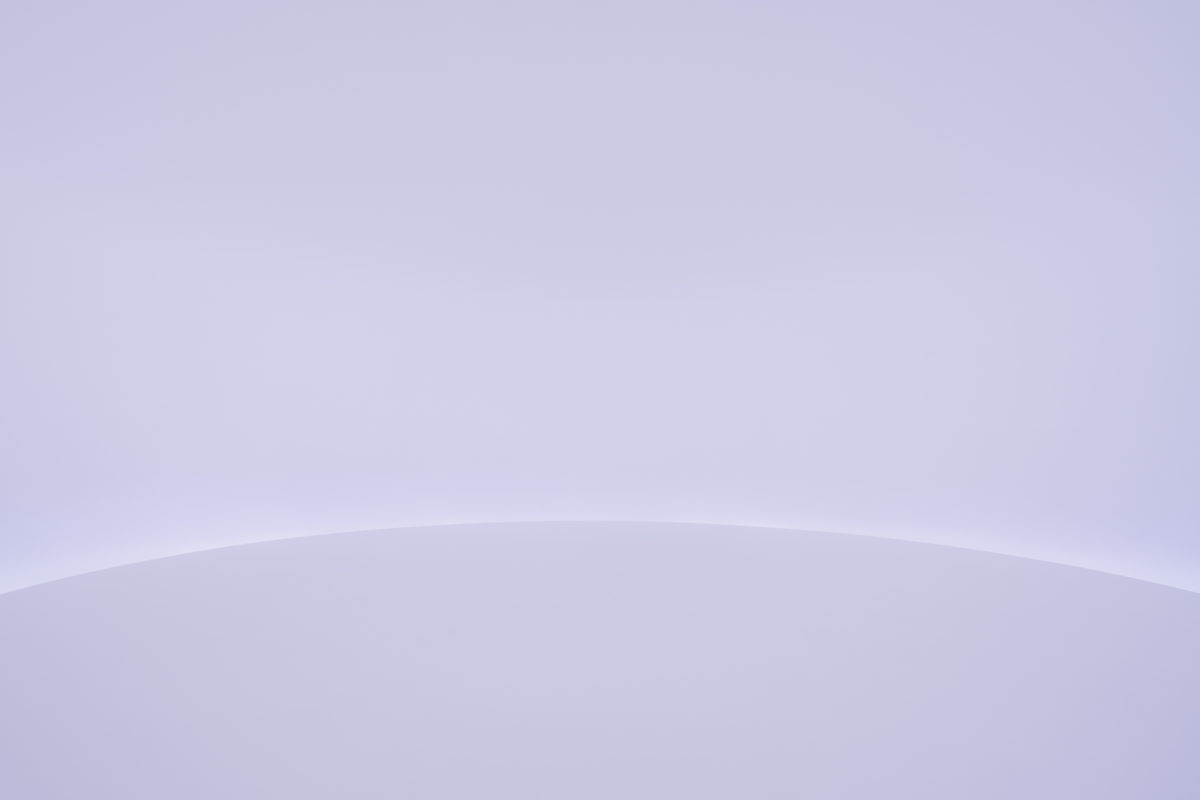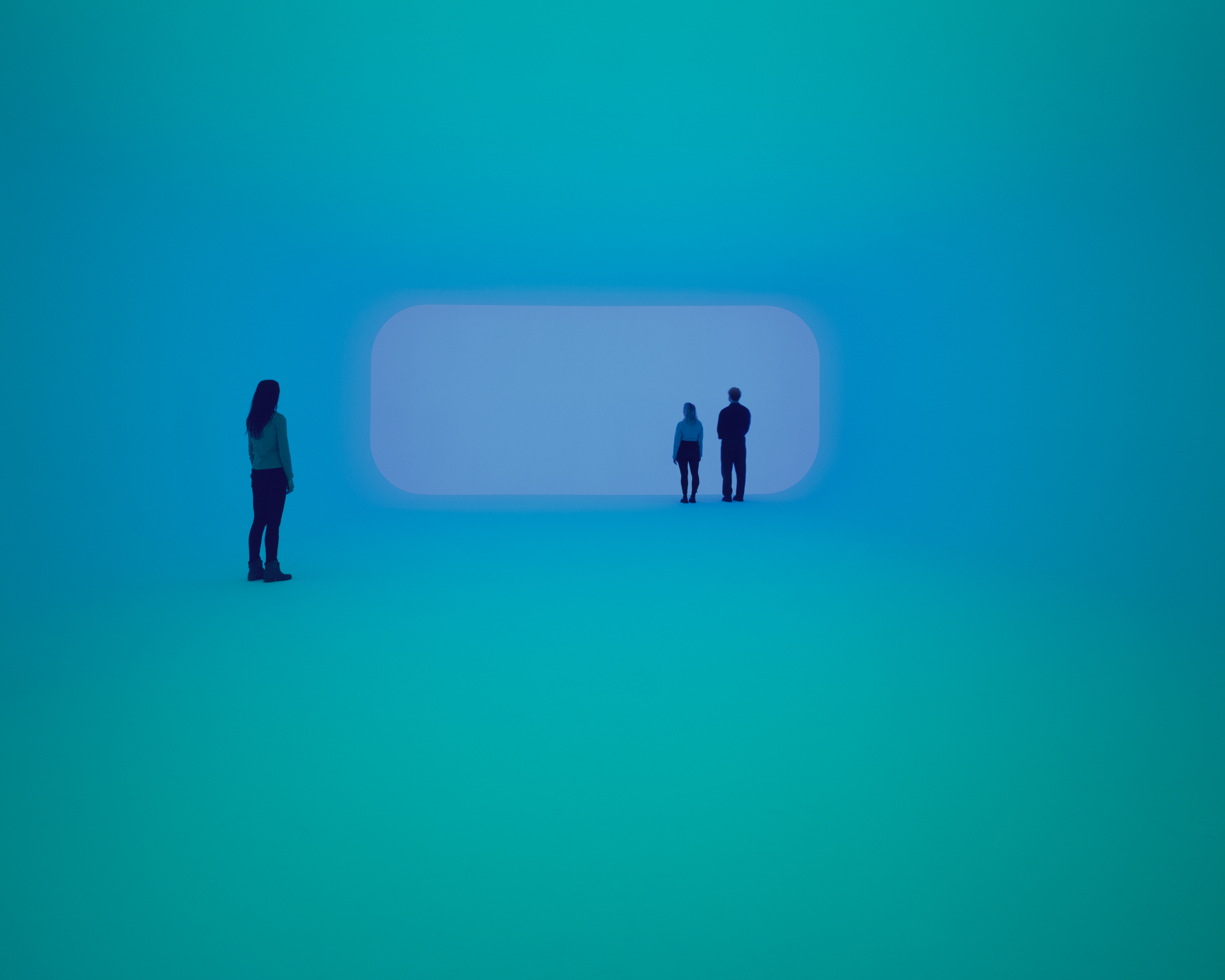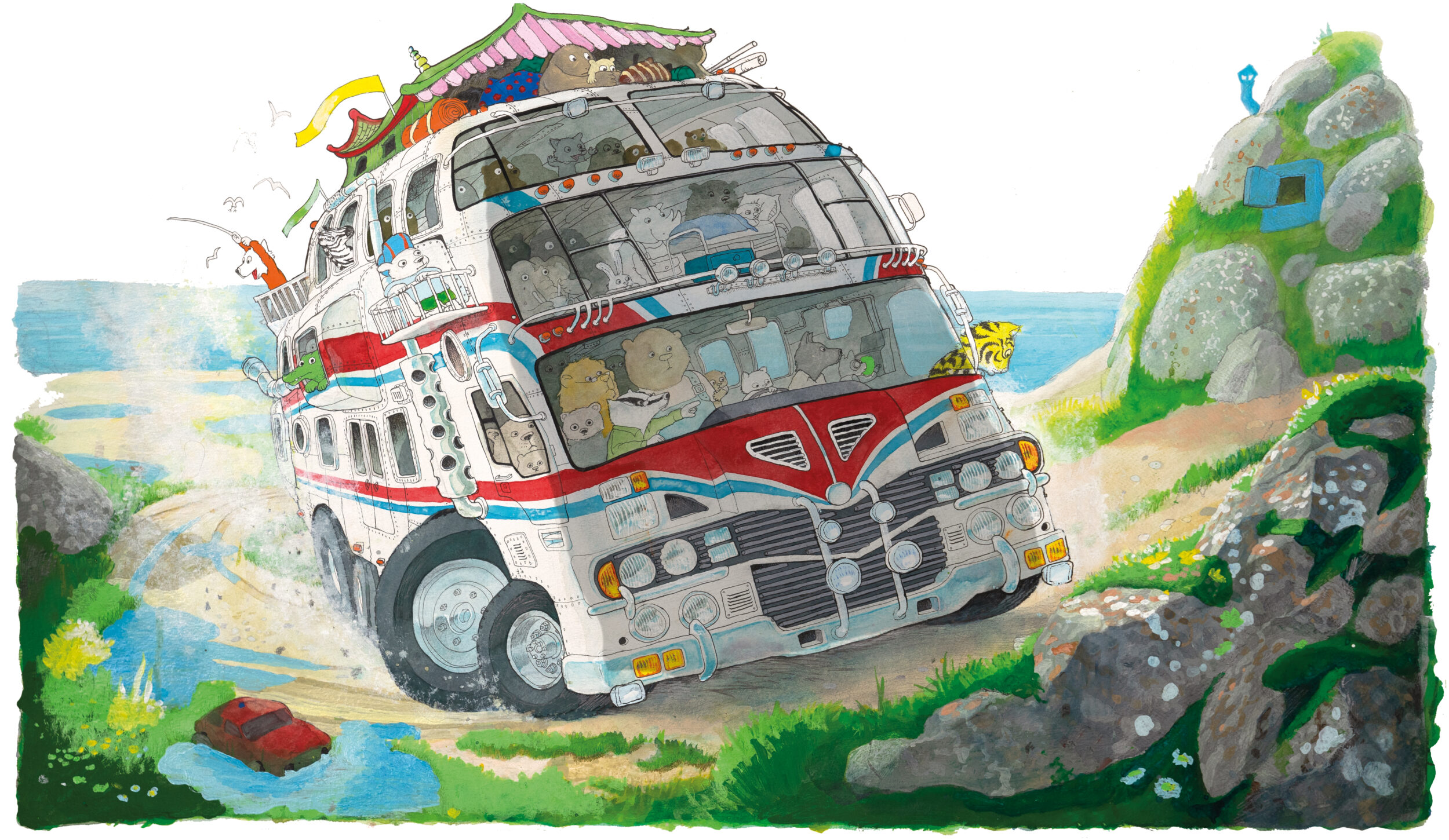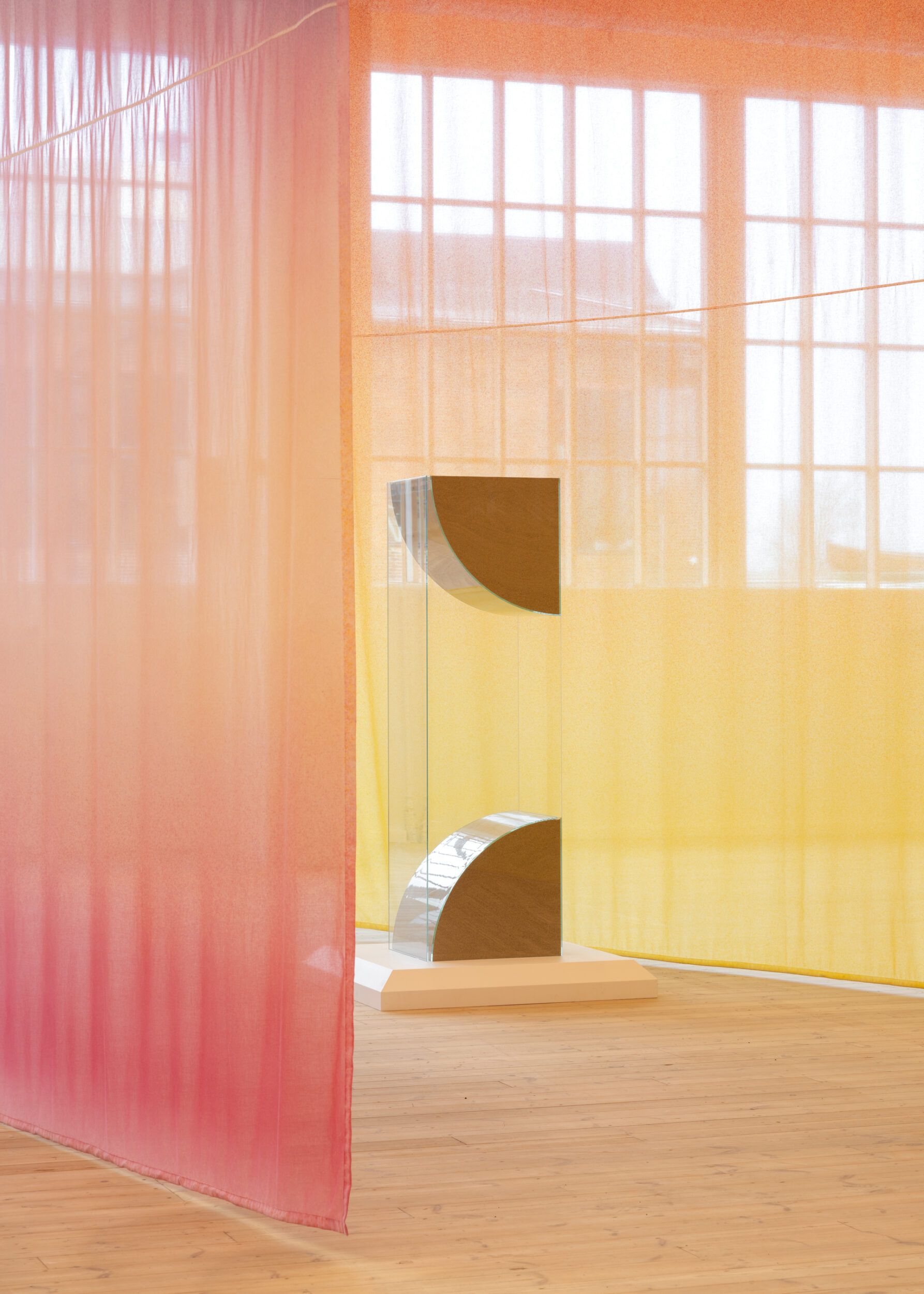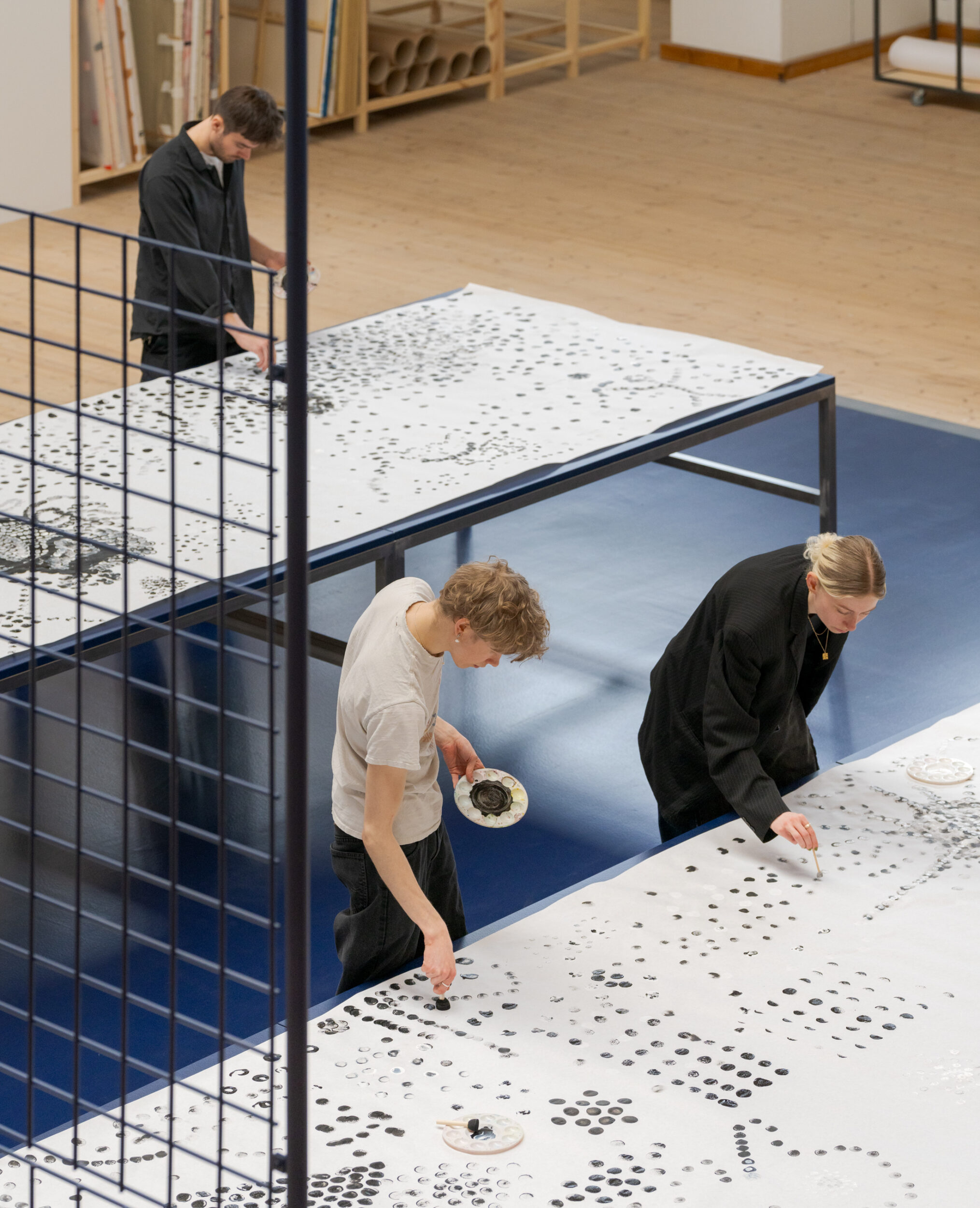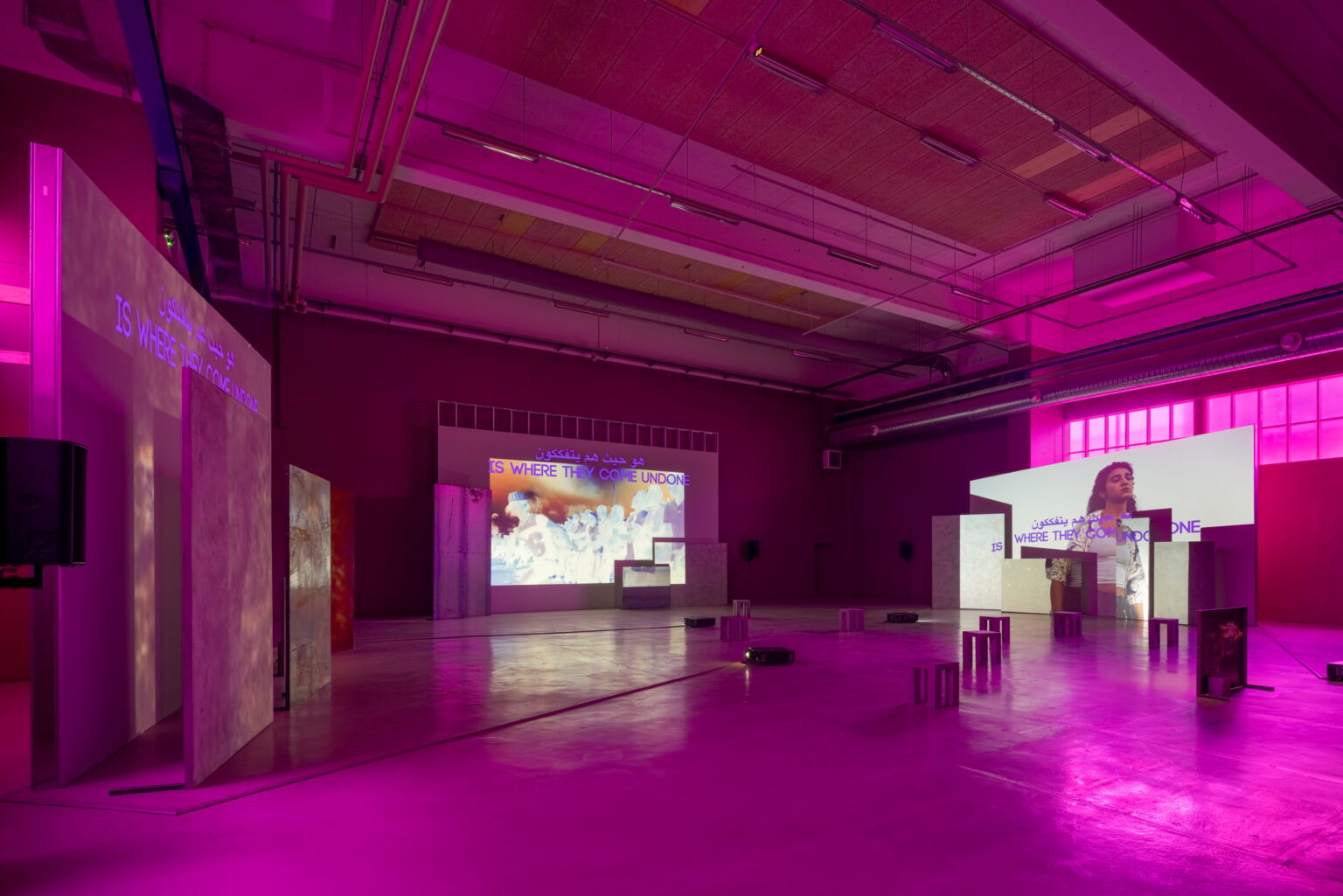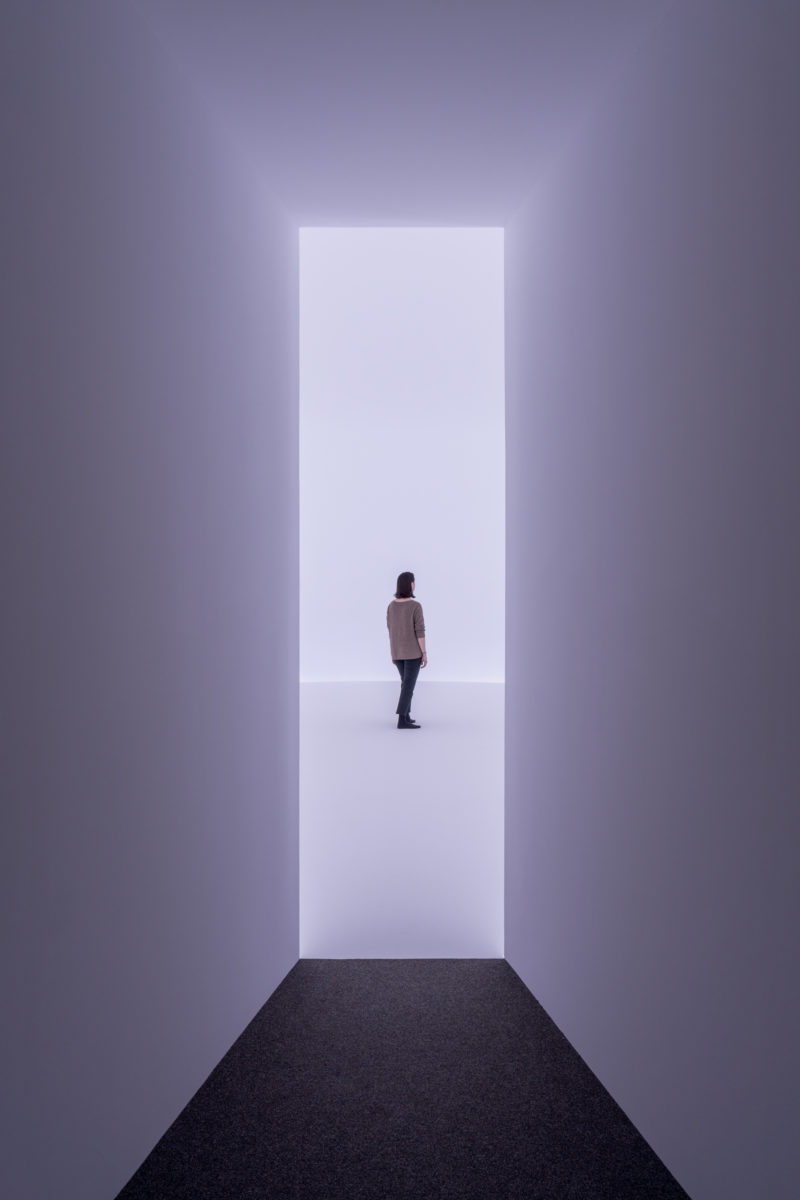
7.9.22 - 14.5.23
Doug Wheeler
LC 71 NY DZ 13 DW
The exhibition
The American artist Doug Wheeler’s light installation LC 71 NY DZ 13 DW is a domed structure, approximately 20 meters in diameter and 8 metres high. The immersive installation is inspired by the artist’s life-long experience as a pilot and his perception of the horizon and vault of the sky from the 180-degree vantage point of a plane.
With its raised and doomed floor, the work creates a subliminal analogy to the curvature of the earth. Inside the environment, you will see the light change almost imperceptibly along the “horizon”, evoking an impression of the earth’s rotation. Challenging your perception of time and place, the installation invites you to a seemingly infinite space that affects and defines the experience of light in the natural world.
Doug Wheeler – pioneer of the “Light & Space”-movement
Doug Wheeler is an American artist and pioneer of the so-called “Light and Space” movement, which flourished in Southern California in the 1960s and 1970s. His works include drawings, paintings and installations characterised by a unique experimentation with the perception and experience of space, volume and light. In his works, the artist’s controlled use of light and sound to create a sensory impression of infinite space. By dematerializing, Wheeler transforms these spaces into abstract worlds.
About Doug Wheeler
Doug Wheeler grew up in the high desert of Arizona and became a pioneer of the Light & Space movement in southern California in the 1960s and 1970s. He is best know for immersive installations experimenting with space, volume, light and sound, but he has also worked in painting and drawing. Transforming spaces into abstract worlds, Wheeler’s installations challenge the viewer’s perceptual expectations and make possible unique sensory experiences.

